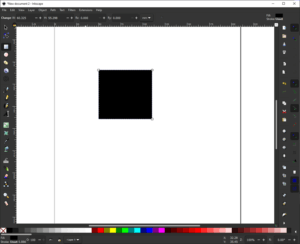


(Same for adding by double-clicking, which works in the Gradient tool) Inkscape Version and Operating System: Inkscape. If deleting works, adding should work as well. Pay attention to the three buttons “Delete”, “Align” and “Create”, which can be found at the bottom of the window. create a gradient and add another stop in the center by Ctrl+Alt+Click with the gradient tool Make sure the Node tool has 'Enable Gradient editing' set to true. I use a width of 700 and a height of 250 pixels. To do this, it is possible to measure it in clones, indicating their number in the column and row, or in pixels and other similar units of measurement, indicating the width and height of the group for this. Below on this tab we will indicate how large our group of clones will be. Despite the other options available here, I will use a simple offset (P1), which is selected by default.

On the first tab, “Symmetry,” we will indicate how we will distribute the stars. I will note the settings I used here and at the same time try to explain them a little. If the objects are positioned one next to another like in your drawing you should probably make each one larger so they overlap, so once you blur them there won't be background showing through. Having resorted to each of these tabs, you will be able to change the entire group at once depending on the settings encountered on them. Tutorial 15, Part B Cylinders, Spheres, and Other 3-D Effects. Inkscape doesn't come with a conical gradient option but you're going in the right direction, you have to use several triangular objects and blur them.


 0 kommentar(er)
0 kommentar(er)
